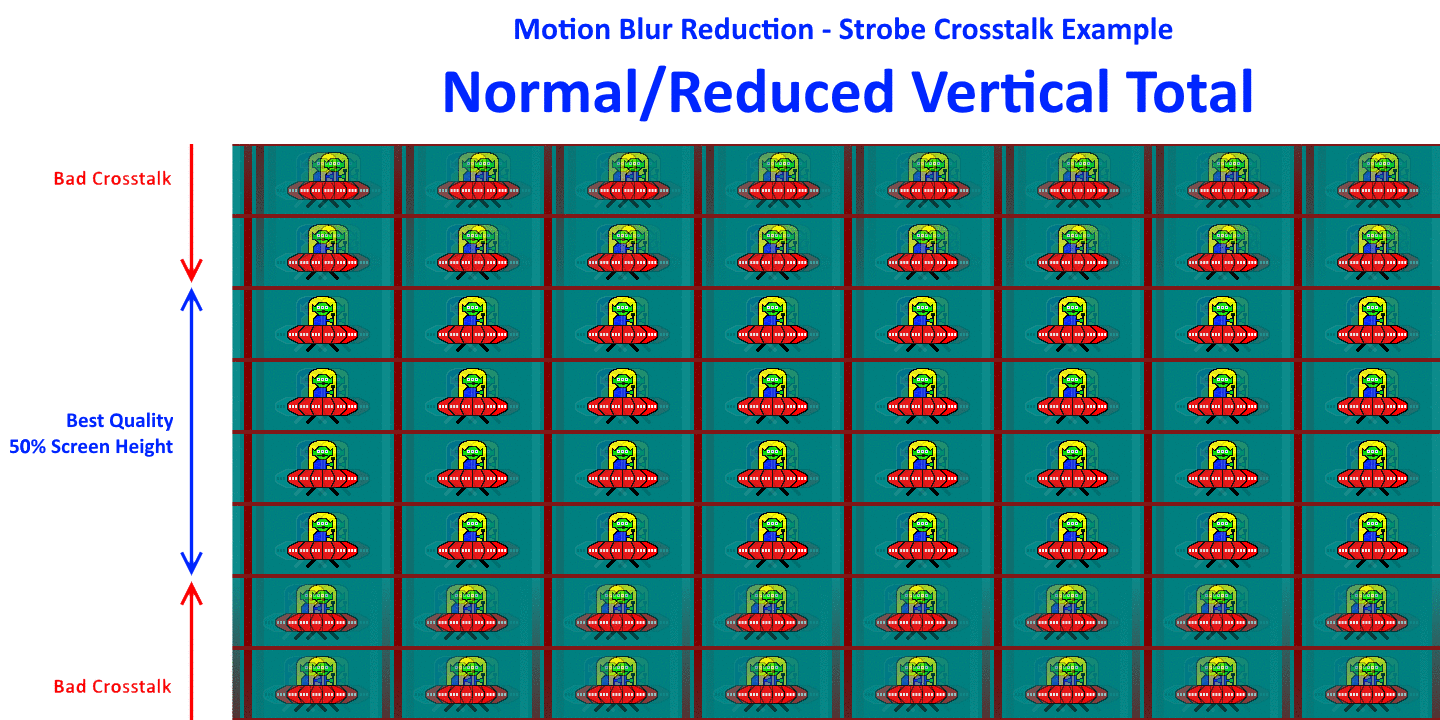The XL2735 uses a totally different scaler chip that is much more intolerant of vertical totals as far as I know.
Some monitors already does the equivalent of internal Large Vertical Totals (via internal scan-rate conversion). I have reason to believe the XL2735 may be doing this whenever DyAc is turned on.
There are two ways to reduce strobe crosstalk via accelerated for the same Hz:
1. User-side GPU-side Large Vertical Totals; or (makes it hard to fiddle).
2. Internal monitor logic via scan rate conversion. (makes toggling blur reduction easier, but can add more strobe lag)
When a monitor is already doing (2), doing optimizations for (1) have far less effect or has no effect.
Non-DyAc blur reduction (XL2720Z) hugely benefits from #1
While NVIDIA ULMB doesn't benefit visually because it's already doing #2 -- strobing comes fully pre-tuned at factory.
<Ultra technical explanation>
The XL2546 does it via internal monitor logic since it panel scans-out mainly at full velocity, so the only purpose of Large Vertical Totals is to reduce frame delivery latency (since Large Vertical Totals can double as a Quick Frame Transport (QFT) mechanism -- deliver individual refresh cycles faster over the video cable -- which can compensate for monitors that does internal scan-rate conversion for lower-Hz signal input via fixed high-scanrate panel refreshing logic). It's simply an art of "cramming the GtG elephane into the VBI" -- trying to hide LCD pixel transitions in the vertical blanking interval between refresh cycles. This only recently became possible only about ten years ago, when pixel response times became a tiny fraction of a refresh cycle. That made the modern CRT-motion-clarity strobe backlight possible. But unfortunately GtG pixel response is not 100% perfect or 100% complete, so that's why strobe crosstalk still exists. Sometimes it's below human-detectable levels, and that's the art of strobe tuning, and why Blur Busters Strobe Utility exists to help users to try to reduce crosstalk even further, with creative user tuning. However, the DyAc brand of blur reduction often comes more pre-tuned at factory and makes Strobe Utility a little less necessary than it was for early models like XL2720Z...
</Ultra technical explanation>

The same effect will often occur when you progressively decrease your refresh rate; the crosstalk-free zone will thicken. But the crosstalk-free zone will thicken
even more with a large blanking interval (either via user-created Large Vertical Total, or via monitor internal behaviour).
What you can try to do is simply test progressively lower refresh rate. Does DyAc crosstalk improve massively as you lower Hz? Now add a Large Vertical Total (try using the Appendix A trick at
http://www.blurbusters.com/crosstalk ....). Does near-crosstalk-free zone improve? If yes, then it worked. If not, then the monitor is possibly already doing the job and you only simply possibly reduced frame delivery lag (by maybe about 0.5ms-2ms) depending on the delta between original VT and large VT.
See
Animations Of Strobe Tuning.
